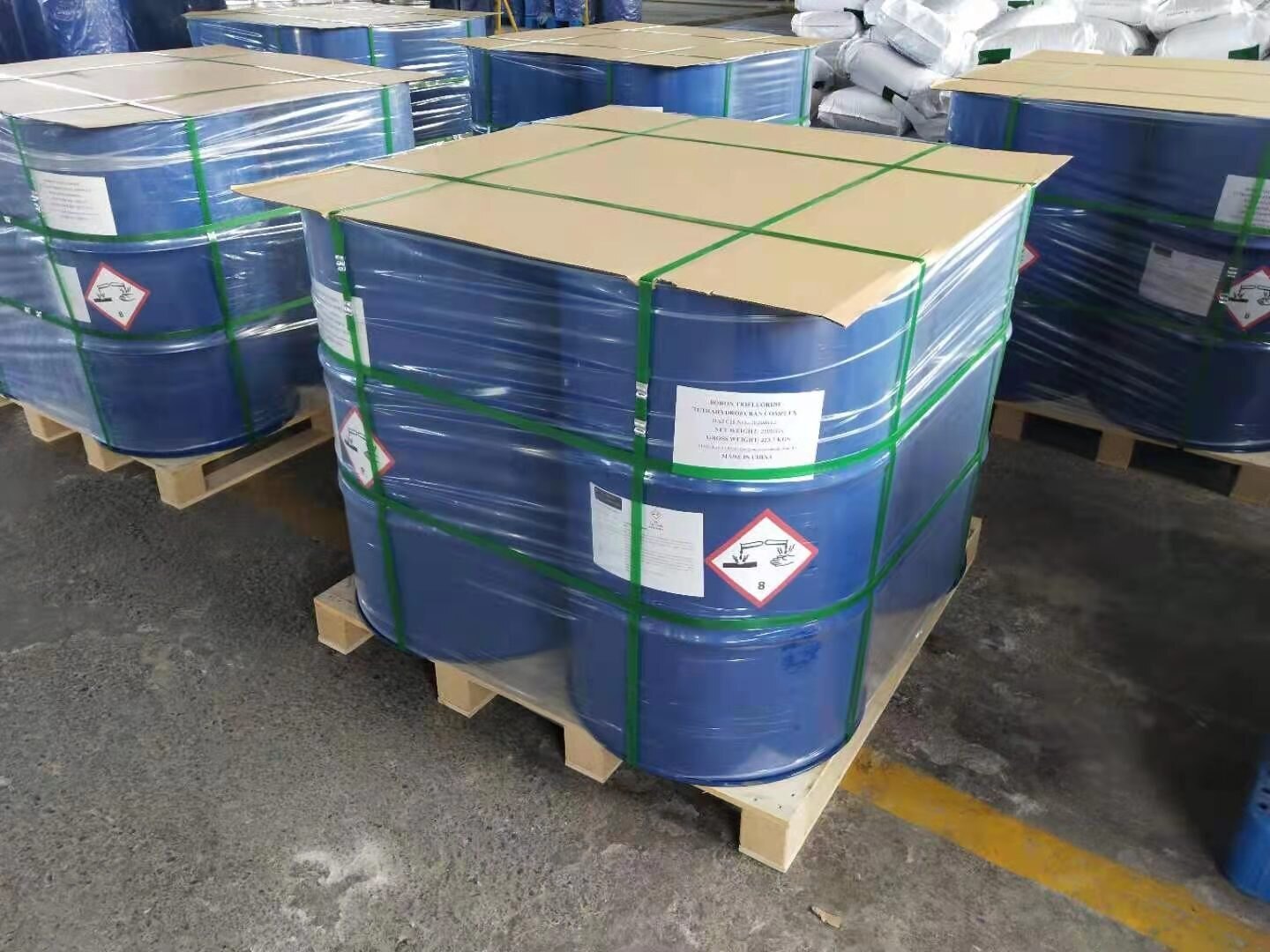Chemical & Physical Properties
- Appearance: Colorless gas with a strong, irritating odor
- Boiling Point: -100.3°C (-148.5°F)
- Melting Point: -127.1°C (-196.8°F)
- Density: 1.55 g/L (gas)
- Solubility: Reacts with water, forming boric acid and hydrofluoric acid (HF)
- Corrosiveness: Highly corrosive to metals, glass, and human tissue
Key Features & Benefits
✅ Powerful Lewis Acid Catalyst: Enhances reaction efficiency in chemical and petrochemical industries
✅ Essential in Organic Synthesis: Used for alkylation, acylation, and polymerization reactions
✅ High Reactivity & Selectivity: Forms stable complexes for controlled chemical transformations
✅ Critical in Semiconductor Processing: Utilized in ion implantation and etching processes
✅ Available in Various Forms: Supplied as a gas or in complexed liquid forms (e.g., BF₃-etherate)
Industrial Applications
Chemical & Petrochemical Industry
- Catalyst in Organic Reactions:
- Used in Friedel-Crafts alkylation and acylation reactions.
- Facilitates olefin polymerization and isomerization processes.
- Refining & Hydrocarbon Processing:
- Enhances production of high-octane fuel additives and lubricants.
- Catalyzes hydrocarbon cracking in petrochemical plants.
Polymer & Plastics Industry
- Polymerization Catalyst:
- Used in the production of high-performance polymers such as polyisobutylene.
- Enables controlled polymerization in resin and elastomer manufacturing.
Pharmaceutical & Fine Chemicals
- Synthesis of Boron-Based Compounds:
- Serves as a key reagent in drug synthesis and boron-containing specialty chemicals.
- Gas-Phase Reactions in Chemical Manufacturing:
- Used to introduce fluorine-containing functional groups in fine chemicals.
Semiconductor & Electronics Industry
- Ion Implantation in Semiconductor Processing:
- Introduces boron into silicon wafers for doping applications.
- Etching & Deposition Processes:
- Employed in chemical vapor deposition (CVD) and plasma etching.
Reactivity & Safety Considerations
⚠️ Highly Corrosive & Toxic Gas!
- Water Sensitivity: Reacts violently with moisture, forming hydrofluoric acid (HF), a highly toxic and corrosive substance.
- Air Sensitivity: Must be handled in a dry, controlled environment to prevent hazardous reactions.
- Handling Precautions:
- Use only in fume hoods or enclosed systems with proper ventilation.
- Avoid exposure to skin, eyes, and respiratory system.
Handling & Storage
- Storage Conditions:
- Store in tightly sealed, moisture-free cylinders under dry, inert gas (argon or nitrogen).
- Keep in a well-ventilated, temperature-controlled storage area.
- Personal Protective Equipment (PPE):
- Chemical-resistant gloves, safety goggles, and protective clothing.
- Use gas detection systems and emergency response protocols.
- First Aid Measures:
- Inhalation: Move to fresh air immediately; seek medical attention.
- Skin/Eye Contact: Flush with large amounts of water and seek emergency care.
Packaging & Availability
Available in:
- High-pressure gas cylinders (1L, 10L, 50L)
- BF₃-complex solutions (BF₃-etherate, BF₃-methanol, etc.)
- Ultra-high purity (UHP) grades for semiconductor applications
Boron Trifluoride (BF₃) is a colorless, toxic, and highly reactive gas with a pungent odor. As a strong Lewis acid, BF₃ is widely used as a catalyst in organic synthesis, polymerization, and petrochemical processing. It readily reacts with moisture, forming hydrofluoric acid (HF) and boric acid derivatives, making it essential to handle under controlled conditions. Due to its high reactivity and coordination ability, BF₃ forms stable complexes with ethers, amines, and alcohols, broadening its industrial and laboratory applications.




